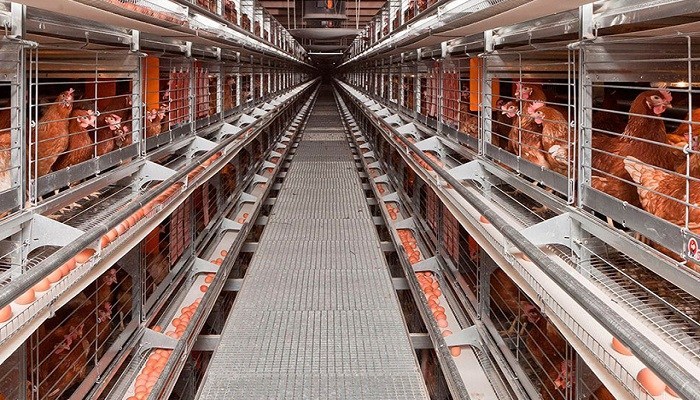Antibiotic resistance is a major global health problem in Indonesia throughout the world including in farming sector, especially poultry, such as farming failure incurring economic losses and sources of resistant organisms that may pose a risk to human health. The use a large number of antimicrobials to prevent and treat diseases is the root of the problem. Enterobacteria especially Escherichia coli are pathogenic bacteria in the digestive tract of animals and humans and can be used as indicator of antibiotic resistance that can develop into multidrug-resistant problems that are not only resistant to 1 antibiotic but more than 3 antibiotics.
Exposure to antibiotics in animals to inhibit microbes can cause some resistance. The pattern of Escherichia coli resistance in poultry is the main goal to reduce transmission of resistance in farm areas. Observation of antibiotic resistance mainly investigates the patterns of microbial resistance that are commonly found in poultry. Escherichia coli is generally detected in the environment so it can enter the digestive tract of animals. Antibiotic resistance is caused by various factors that affect bacteria. E. coli has a gene that functions preserving resistance from the influence of antibiotics derived from plasmids. E. coli has been detected to have plasmids to several drug resistance genes. Plasmids can carry resistance genes in bacteria that are sensitive to antibiotics. This study uses several antibiotics that are often associated with data on resistance in E. coli. The purpose of this study is to show the occurrence of multidrug resistant (MDR) from E. coli and extended spectrum beta-lactamase (ESBL) produced by E. coli from laying poultry farms.
The study collected 40 samples from 8 farms in Blitar, East Java. Samples obtained from the cloacal swab then taken to the Laboratory by Amies transport media wrapped in sterile conditions and a cool box. The inoculated sample was streaked to the MacConkey agar medium and incubated at 37 ° C for 18 ± 24 hours. The colony showing lactose fermentation was purified and continued to positive presumptive test of E. coli. Bacteria identification was carried out using morphology and biochemistry tests. Biochemical tests include Indole, Methyl Red, Vagos-Pasteur, Simon Citrate (IMViC) and TIA tests to determine genus levels and continued until sugar fermentation tests to determine E. coli species.
Sensitivity testing was performed using Kirby-Bauer discs, diffusion tests on Mueller-Hilton agar media. Antibiotics and concentrations used were ampicillin (10μg), chloramphenicol (30 μg), gentamicin (10 μg), ciprofloxacin (10 μg), trimethoprim-sulfamethoxazole (25 μg), ceftazidime (30 μg), amoxicillin clavulananic acid(30 μg), cefepime (30 μg), ampicillin sulbactam (20 μg), cephazolin (30 μg), amikacin (30), tetracycline (30 μg), levofloxacin (20 μg), cefazolin (30 μg), amikacin (30), tetracycline (30 μg), levofloxacin (30 μg) 5 ug) and meropenem (10μg). Interpretation of antibiotic resistance using CLSI Standard through measurement of inhibition zone parameters formed in the study. ESBL Confirmation using Double DiscTest Synergy (DDST): Test for ESBL in E. coli using CAZ / Ceftazidime 30μg dyscticotic, AMC / Amoxicillin Clavulanate acid 30μg, CTX / Cefotaxime 30μg, ATM /Aztreonam 30μg and inoculation on agar plate.
In this study, a total of 40 cloacal swab samples were taken from laying poultry farms in Blitar and screened for the presence of multidrug resistant (MDR) and Extended Spectrum Beta-lactamase (ESBL) produced by E. coli. The total prevalence of 47.1% of E. coli obtained with MDR and ESBL cases was 5.9% in laying hens. This is consistent with Kwoji’s research, where similar occurrences of E. coli have also been reported.
Multidrug resistant (MDR) as an organism that is resistant to three or more classes of antimicrobials. One method often used by various researchers to characterize organisms as MDR is based on the results of in vitro antimicrobial susceptibility tests. In this study, there were 16 multidrug resistant (MDR) isolates and 2 extended spectrum beta lactams (ESBL) isolates. This is related to the increased use of antibiotics which also results in increasing the number of MDR isolates in poultry. MDR isolates can be transmitted to humans through contact or consumption of food from animals contaminated with E.coli.
In our research findings, 100% of ESBLisolate-producing showed multi-drug resistance for various classes of antibiotics. This finding correlates with other studies in other countries such as Switzerland, Zambia and Turkey, almost all ESBL-producing E. coli isolates found in animals are multidrug-resistant (MDR). The MDR resistance properties of these isolates can be explained by the fact that ESBL is mediated by plasmids carrying multiresistant genes by plasmids, transposons and integrons and are also ready to be transferred to other bacteria. Bacteria with a variety of antibiotic resistance are widely distributed in animals and the environment.
The high percentage of antibiotic resistance in E. coli were for ampicillin, ciprofloxacin, tetracycline and trimethrofim sulfamethoxazole which was more than 50%. The number of MDR isolates of E. coli was significantly higher in healthy poultry, which 16 isolates and 2 ESBL were found producing E. coli isolates. These general descriptions of antibiotic resistance from poultry bacteria have created a basis for future studies and analysis of resistance development in Blitar, East Java, Indonesia. In this regard, we highly recommend assessing treatment plans in the poultry industry in Blitar to ensure the use of antibiotics wisely and to minimize the potential spread of antibiotic resistant bacteria from poultry to the environment and humans.
Correspondent author: Dr. Mustofa Helmi Effendi, drh., DTAPH Details of this research available at:
Adiana Mutamsari Witaningrum, Freshinta Jellia Wibisono, Dian Ayu Permatasari,Wiwiek Tyasningsih, Mustofa Helmi Effendi, Fredy Kurniawan. 2020. Potential Hazards of Antibiotics Resistance On EscherichiaColi Isolated From Cloacal Swab In Several Layer Poultry Farms, Blitar, Indonesia. Indian Journal of Public Health Research & Development, 11(03): 2429-2435





